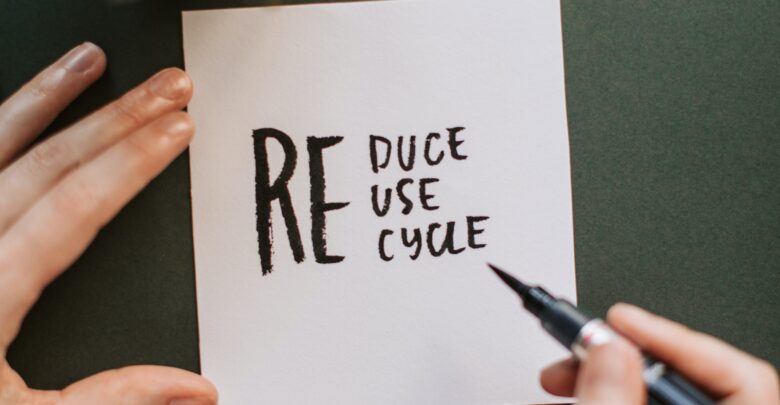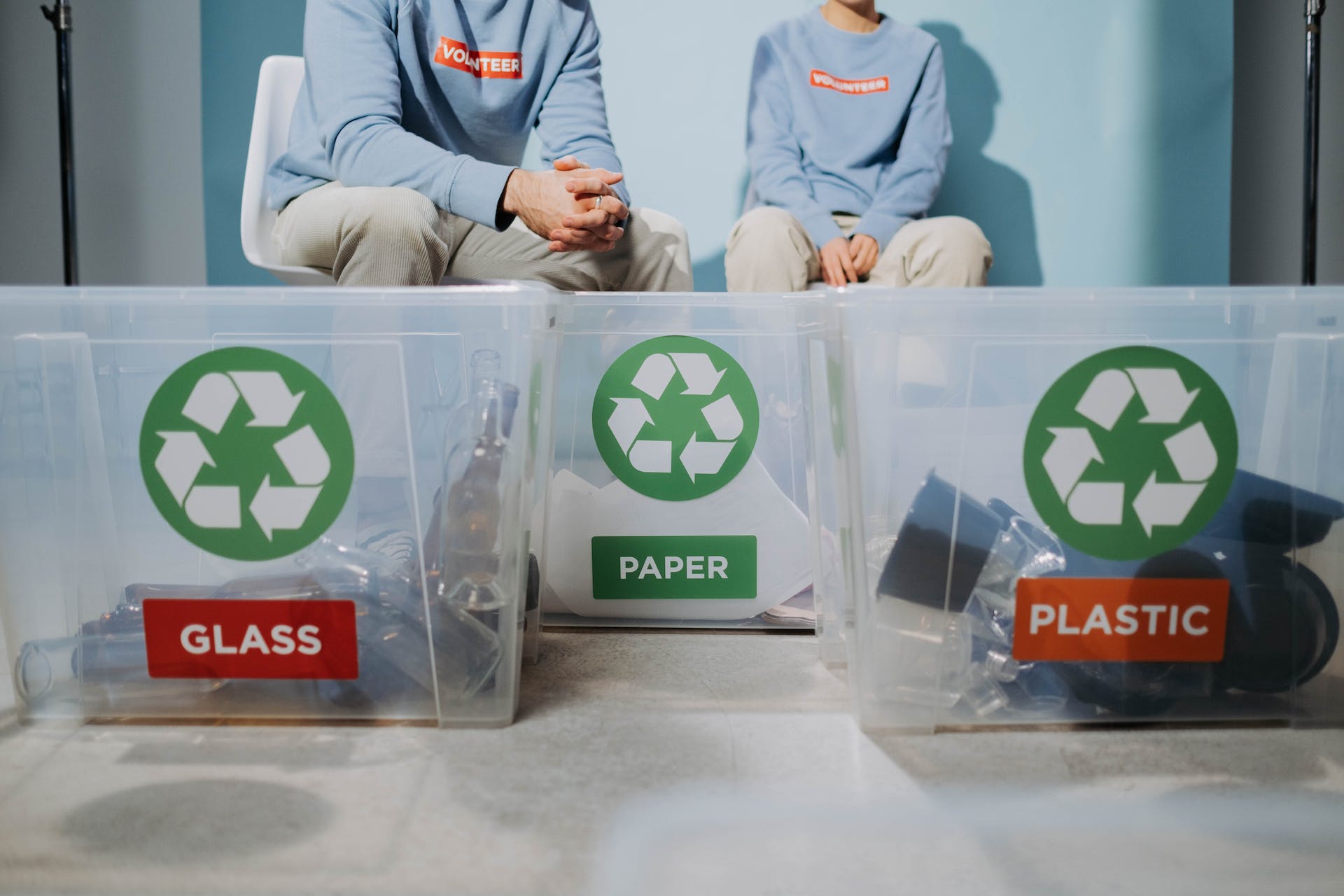
Recycling is converting waste material into new material. It is the process by which you make waste into something reusable. The process involves the collection, conversion, and reuse.
Fun Fact:
You have two variations:
1.Upcycling – this process involves adding value to an item by reusing it.
2.Downcycling – this process involves breaking down a waste product to its substance to reuse anything that can be saved.
Recycling is key to saving the environment. Unless you have been to another planet, you should be aware of how we have become a consumeristic world. Our consumption has skyrocketed to the point that waste material is dumped into other countries. It has come to that point where countries would rather send their waste to other third world countries for dumping than processing it on their own. It’s a sad fact. That is why we should be more conscious of our efforts to “Reduce, Reuse and Recycle!”
In the US alone, statistics show that Americans produce 200 million tons of trash yearly! The US is one of the biggest producers of waste.
Worldwide Statistics on Recycling
In an article written by Maryruth Belsey Preibe for EcoLife.com, she compiles facts and stats about where we are now in terms of our response to the “Reduce, Reuse, Recycle” challenge this year. She divides our recycling process into seven major categories: Electronic waste, glass, hazardous waste, metal (or steel), food and yard waste, paper, and of course, plastic.
You will be amazed by the statistics below:
1.Electronic Waste (or e-waste)
According to the US Environmental Protection Agency in a 2010 article, that the
average American household owns AT LEAST 24 electronic devices. Each device can contain a
thousand components. Some of which can be toxic. A phone gets tossed after 2 years or less.
Laptops for about 3 years. 85% of e-waste is not recycled which means that over 3 million tons
of e-waste is dumped somewhere around the globe.
2.Glass Waste
Glass makes up only 5% of solid waste in the US, but only 22% of glass
containers are recycled. Most of the glass that thrown comes from food containers and the like.
Some types of glass cannot be recycled. If you make glass from recycled material, you reduce energy consumption.
3.Hazardous Waste
Hazardous waste can be recycled! Household wastes include fuel, oil, thinners, paints, cleaning products, batteries, pesticides, and the like. 1.6 million tons of household hazardous wastes are disposed of yearly. If these chemicals are buried in landfills, they can lead to air, water, and soil contamination.
4.Metal (Steel) Waste
The most common metal we can recycle is aluminum and steel. Many aluminum products can be recycled like soda cans, window frames, food cans, and foil wraps among others.
Metal waste takes about 8.4% of the total disposed materials per year in the US. One of the easiest and best ways we can contribute to helping the environment is bringing soda cans to recycling centers. Why? Using scrap aluminum consumes 95% less energy than making them from raw material. The energy saved in the steel recycling industry can power 18 million homes per year! How amazing is that!?
5.Food and Yard Waste
Food waste, wood, and other biodegradables can be recycled mostly through composting. There are commercial composting facilities in your municipality or you can make a small composting pile in your backyard. If you think that throwing food waste in the trash seems harmless (because they are biodegradable!), think again. They can create environmental problems in the long run when sent to landfills. Why? As they decompose, they produce methane, a greenhouse gas that is 23 times stronger than carbon dioxide. They can also create leachate, a liquid that can contaminate groundwater and soil.
6.Paper Waste

If you think that we have come a long way because of email, Viber, WhatsUp in our communication. Think again. Although electronic communication has lessened the use of paper telegrams, we have yet to accomplish a paperless society. Paper waste still is at 31% of the total garbage disposed of in landfills. The good news is: paper is the easiest material to recycle.
Even kids can recycle paper. Statistics show that we can save 17 trees per year when we recycle paper.
7.Plastic Waste
Plastic waste when thrown in landfills does not break easily. A single plastic bag takes a thousand years to dissolve. Americans throw 200 million of them every year. Recycling plastic is, therefore, a must to help save the environment. With the recent technological advancement, you can now make carpet, clothes, pipes, lawns, films, moldings, and more from recycled plastic.
What are the Benefits of Recycling?
Recycle every day and contribute to saving the neighborhood (and even the world). A well-maintained recycling routine at home can contribute to the worldwide effort to save our planet. Here are some benefits:
○You prevent millions of tons of waste materials dumped in landfills.
○You limit the emission of methane gas in landfills
○You lessen pollutants released to the water
○You save energy: that is, the energy that is required for producing new products
○You lessen the consumption of natural resources, especially our rainforests.
○Helps local community
○The increase in recycling habits has produced over one million jobs annually.
○It is cheaper for the municipality to recycle than to collect waste and dispose of it.
○Recycling efforts create new business opportunities for the community.
○It can boost tourism. A cleaner environment is more welcoming to tourists.
○Saves you money
○You can get paid for bringing wastes to recycling facilities. (especially electronic
wastes)
○You lessen trips to your local grocery stores to “buy more”
How Can I Take Part in Recycling?
We produce more garbage (in all forms) nowadays. But we can always do our part in making it a better world for all of us. Most of the garbage that is produced can be recycled. All these potential landfill materials can be easily recycled with the help of creativity and modern technology. The US and the UK are one of the biggest producers of wastes in the world. It is about time that you take part in our efforts to Reduce, Reuse, and Recycle.
How?
1.Become familiar with what you can recycle. You can download an app to help you recycle.
There are local recycling sites that have developed an app to help you recycle. Sustainme and RecycleSmart are some examples.
2.Make Recycling Easy. Set up a simple recycling system at home that all the members of the household can understand without you giving them any instructions. Do it with a little bit of artwork. You can put signs which indicate the separation of wastes and recyclables.
3.Get your kids involved. Get them on board so that as early as their age, they are aware of what they can do to help the environment. Be creative! Make it fun for them. You can even ask them to make the signages themselves.
4.Avoid using plastic bags as much as possible. If you cannot. Reuse them as often as possible. Remember, 1 plastic bag will take 1000 years before it disintegrates.
How does GnL take part in recycling
The inner lining of our cork fabric bags use a fabric made from recycling USED plastic bottles. These plastic bottles are broken down and converted to yarn which is then woven into a fabric that can be reused. By buying a GnL bag you will be supporting our initiative to help create a demand for recycled plastic waste products
These are just some tips to get you started. You always have a say when it comes to what you can use, reuse, and dispose of. It is an everyday decision that can become a habit. Let’s get into the habit of reusing, reducing, and recycling!




